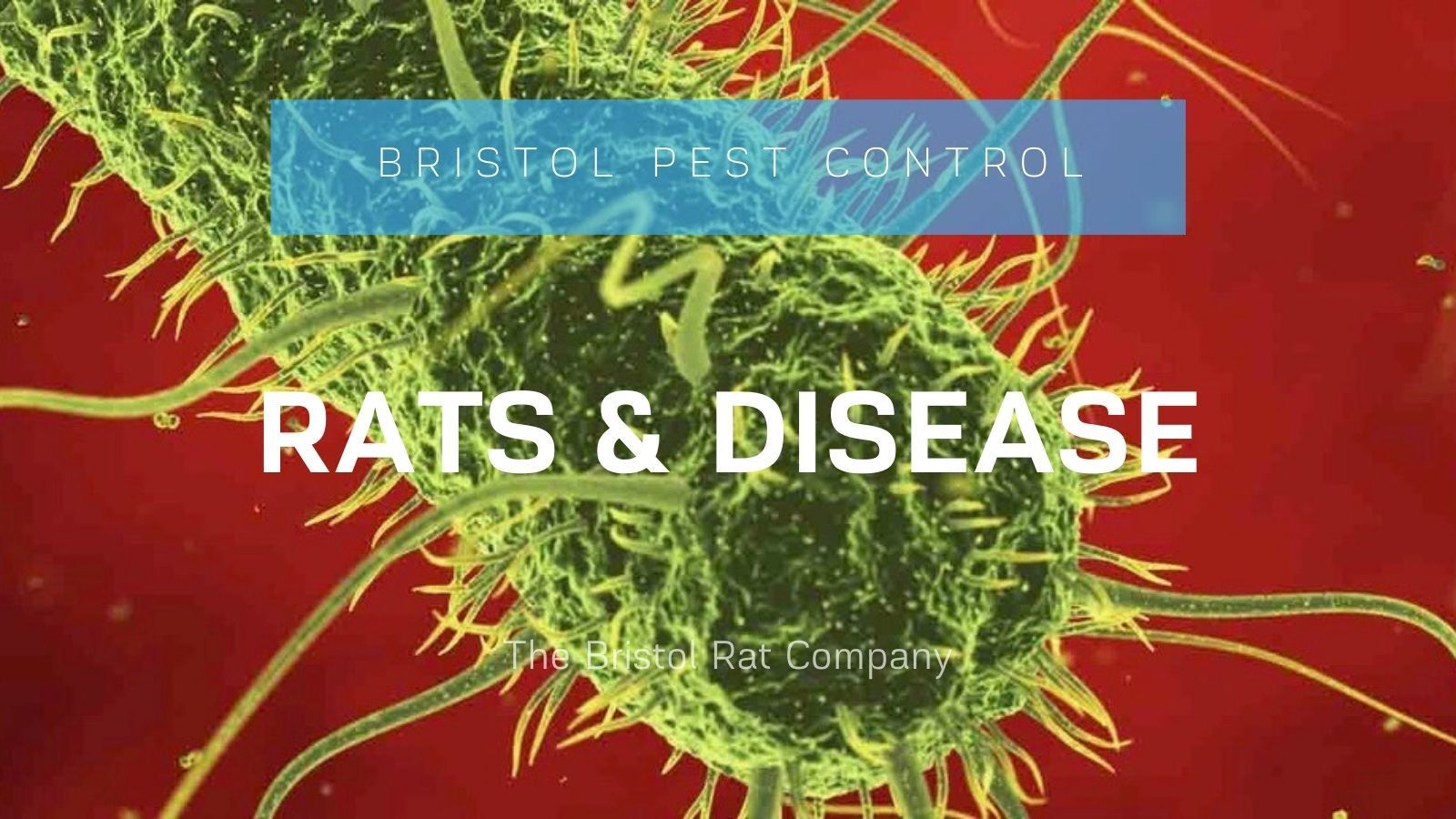Rat Diseases & Fire Risk
RATS: Diseases & Risks!
Why Are Rats So Feared?

Rats, Fire and Disease: The Brown Rat (Rattus norvegicus) is among the most common rodents found in the UK and the rodent you are most likely to encounter in your cellar, attic, cavity wall or even beneath your feet, under the floorboards.
Rodents have a reputation for spreading disease and causing destruction to all manner of property, yet it is our own relationship with these clever creatures, honed over thousands of years that’s responsible for their undeniable success.Dangers & Diseases Carried and Caused by Rats.
Dangers & Diseases Carried and Caused by Rats

Love them or loathe them, rats and their activities lead to human death. Although brown rats are amazing creatures, and when domesticated make cuddly little pets, in the wild they carry dangerous germs. Rat damage often leads to house fires and flooded properties.
Rat urine stains on ceilings, smears on kitchen counters and white goods and droppings under baths and kitchen counters all require remediation that can cost nothing more than some kitchen towel and spray.
Unfortunately, most restoration costs hundreds, and sometimes thousands!
Are You Insured For Damage Caused By Rodents?
On thorough inspection of the damage made, your property may require complete re-wiring, roof re-felting, ceiling replacements, and the list of destruction costing many thousands goes on and on. In many cases, you will not be insured for damage caused by rodents.
Rats Cause Fires! Numerous sources estimated that between 10% and 40% of unexplained house fires are caused by common rodents that include squirrels and mice.
Internal flooding from damage to pipe-work that’s been gnawed can cost many thousands to remedy and is not uncommon. Old and neglected gas supply pipes may also be affected.
Electrical wiring can also suffer extensive hidden damage and increase the risks associated with fires and electrocution especially in properties with outdated consumer units that lack modern circuit breakers.
The damage doesn’t just stop there though! Loft and cavity wall insulation can be heavily contaminated with urine, faeces, dead rodent bodies, fir, stored food debris and an alarming summer stench that attracts flies and all manner of other insect pests – as well as more rats and rodent vermin.
Rats will often choose to urinate in the same place, and this can cause unsightly stains on ceilings or even walls where cavity wall insulation is present.
At The Bristol Rat Company, we know only too well the horrors to be discovered when carrying out a professional inspection.
In short, we know where to look, what to look for and how to eradicate, remediate and prevent rodent activity before further damage is caused to your property or harm caused to you or those around you.
How Rats and Similar rodents Contaminate Your Food
Food is always at risk from contamination, where it is not stored in robust containers.
Often food that is left out is disturbed by foraging rodents and contaminated with faeces, urine, fur and other contaminants – all of which carry harmful microorganisms.
Food preparation surfaces and food preparation equipment is also commonly contaminated and it is no coincidence that rodent activity is the most common cause of food premises closures by environmental health officers.
Diseases transmitted by Rats
Having livestock, dogs or cats living in your garden increases the likely hood of external rat infestation, and internal infestations are common in neglected properties. Your cellar and roof spaces are prime locations for small animals to live and thrive especially in properties with unlined cellars or cavity walls where access to vermin of all kinds is easily achieved.
Plague (Yersinia pestis)
The plague is by far the most well known of all the diseases to be associated with the wild rat. It was, in fact, the rat flea that spread the bacterial organism Yersinia pestis leading to the death of one-third of Europe’s human population in the 1300s.
Fortunately, the last indigenous case in the UK was in 1918, however even today; this frightening disease is still causing death in many countries around the world.
Weil’s disease (Leptospirosis)
This is a notifiable disease, and with up to 50% or more of wild rats being infected with this killer disease, it is little wonder that it ranks as number two of the most well-known rat pathogens.
Spread from wild rats to humans via urine, this bacteria proves fatal to people young and old throughout the world every year, so should not be underestimated.
It is a virulent organism, surviving in our homes and outdoor spaces – remaining infectious for months.
A single adult rat will produce litres of urine and Kilos of faeces, deposited inside and out every year, and with your average colony size between 5 and 12 strong, it is easy to see why rats in residential or other infested, occupied premises, can succumb to what become significant contamination levels.
Leptospirosis starts innocently enough, presenting as a mild case of flue 3 – 30 days after infection, but quickly develops causing internal haemorrhage and multi-organ failure.
Fortunately, only 10% of the reported 40 or so cases in the UK prove to have the most dangerous strain, and only three cases of fatalities have sadly been reported since 1996, so it is with all credit to our health care services that this microorganism is so well managed.
The risk remains however and those that survive still run the risk of lifelong complications from the damage caused to the liver and kidneys prior to effective medical intervention.
The last reported death is probably that of a 56-year-old woman in Brighton, scratched by a rat in her garden – She died of the disease less than a week later.
Q Fever (Coxiella burnetii)
This bacteria is reported to be the worlds most infectious diseases as when inhaled, only one single bacteria is capable of causing infection. The bacterium is associated with many different animals and rats are one of them.
It is believed the rats may pass the organism in the urine and faeces, and once dry makes the organism an airborne transmission risk. Once in the air it can infect humans via the respiratory system and commonly causes damage to the heart.
Although rare in the UK as communicable diseases affecting humans (50 or so sporadic cases each year), it is commonly present in animal populations. Outbreaks in 2002 and 2006 show that this is a pathogen that needs to be taken seriously.
Symptoms of flue emerge 2 – 40 days after infection and some 5% of those infected require hospitalisation. The real risk though is to pregnant women as the disease can adversely and silently affect the unborn baby. Infection normally requires treatment lasting up to three years.
Other Rat Diseases associated with UK rat populations include:
Tuberculosis Cryptosporidium, Salmonella, E. coli and Rat Bite Fever
Book Now – 0117 369 2709
Rats In The Garden Compost Bins
Rats are frequent visitors to compost bins and compost heaps especially when the food is unprotected from the elements or the compost bin is not on a wire mesh foundation. The Rats will burrow up through the floor of the compost bin or simply burrow up from the entrance of the compost bin to collect and remove food.
Rats In Lofts and Attics
Rats are common visitors to loft spaces and can get into the loft in a number of different ways. The first way is to enter the property through damaged drains and climb up through cavity wall insulation into the attic.
Bungalows are at particular risk, but we have seen a row of three-story townhouses where a faulty drain was responsible for a large population of rats living undisturbed beneath the decking, where they came up through a broken drain and then burrowed under the building.
The rats could then be heard climbing up the metal wall ties in the un-insulated cavity and then be heard to be using the guttering as a way to get from one property to another where they defecated and urinated heavily.
Rats In The Garden
Garden Rats are very common especially if your adjoining property has birds, chickens, bird-feeders, bird-baths, rabbits or any other animals that live outdoors and feed on cereals, which rats love.
Another food source is fallen fruit or dog and cat food that has been left out. Compost bins and poor rubbish storage are another draw to your property, so it pays to get these things sorted fast.
Rats In The Cellar
Rats are common in cellars, especially in terrace type properties where they get into properties via faulty drains and then can very easily travel from one house to another through the fabric of the building.
They can move between properties via the guttering, loft spaces, wall cavities and beneath floorboards. Once rats are under your floors they can be a problem to remove as the carpets, underlay and floorboards will need to come up.
Another difficulty is that very often we find that people have laminate flooring down, stone tiles or the floorboards are entirely new and of the tongue and groove variety so they are challenging to remove quickly.
This plays to the rat’s advantage as they are far more likely to be left alone and over time can come to rule the cellars as people are too afraid to tackle them or resent the fact that they are paying for the whole streets pest control.New paragraph